With its heart-shaped leaves and white flowers, it’s easy to see why some may mistake European Frog-bit for a water lily. What you may not know is that European Frog-bit (known to scientists as Hydrocharis morsus-ranae) is an invasive aquatic species and it is being found in more and more bodies of water in Pennsylvania. Pymatuning Reservoir is one of those bodies of water that has seen Frog-bit within the last few weeks. As a result, the Department of Environmental Protection (DEP) Northwest Regional Office's (NWRO) Waterways and Wetland Program’s Great Lakes and Coastal Resources staff teamed up with volunteers from the Pennsylvania Department of Conservation and Natural Resources (DCNR), PA Sea Grant and the Crawford and Mercer County Conservation Districts to help remove the plant before it spreads throughout the Commonwealth’s largest lake.
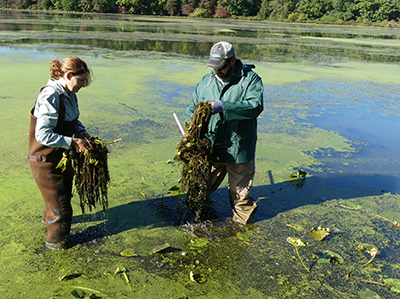
European Frog-bit is a free-floating aquatic plant that resembles a miniature water lily. While this plant isn’t necessarily a new threat, having been in the Great Lakes since the 1930s, it is relatively new to Pennsylvania. In 2013, the first reported finding of European Frog-bit was found in Ackley Swamp in Pine Grove Township, Warren County, Pennsylvania. It has since found its way to other bodies of water in Northwest PA including Hartstown Marsh, Geneva Swamp, Lake Wilhelm, and now Pymatuning Reservoir.
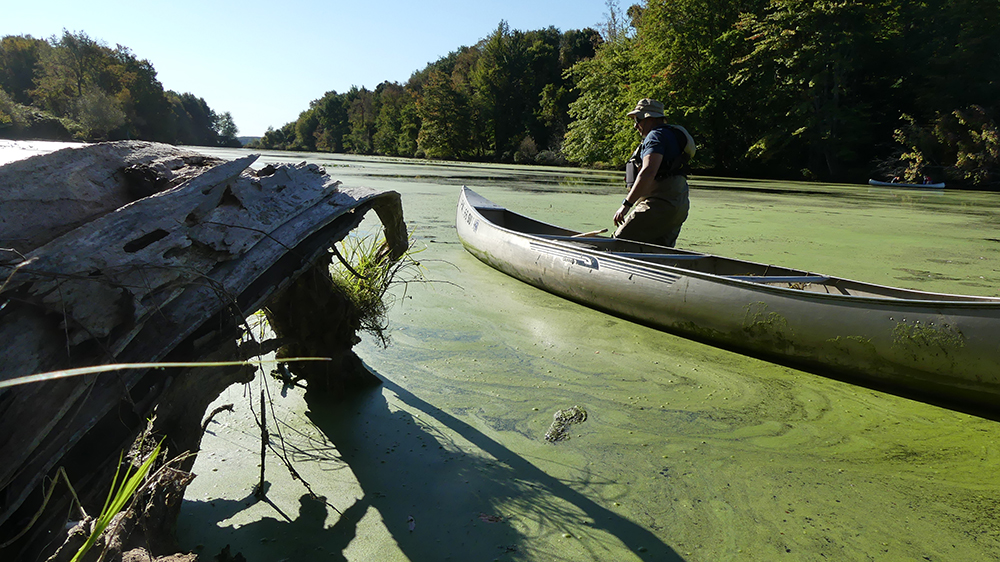
“Like a lot of invasive plants, it comes in and spreads quickly, taking over and covering the aquatic ecosystem while smothering out the species that are native,” said Stacie Hall, Assistant Manager of Pymatuning State Park. “This throws off the entire food chain and impacts the health of the body of water.”
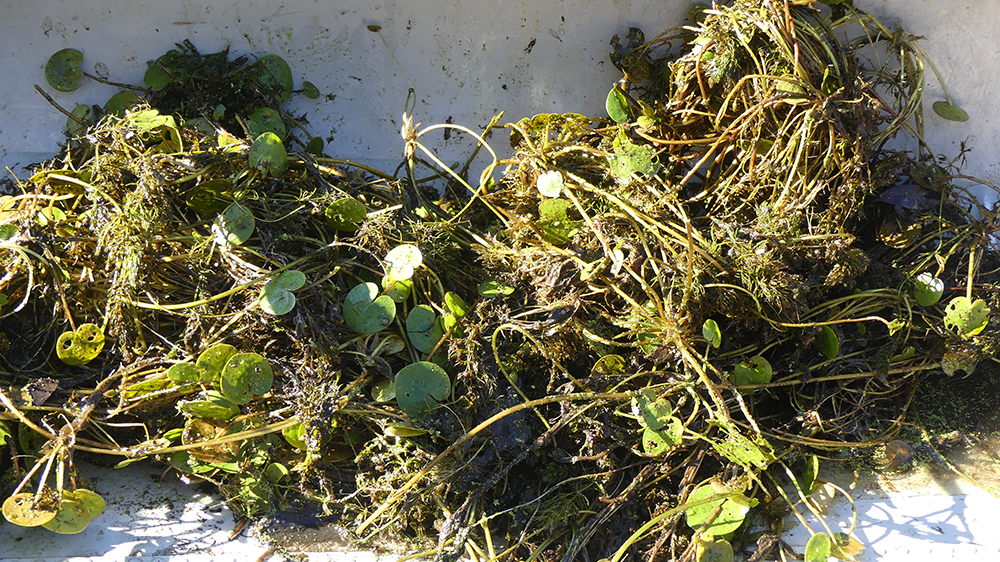
As European Frog-bit grows and multiplies, the dense mats restrict light penetration available to native vegetation attempting to grow beneath. European Frog-bit typically grows in still, calcium-rich areas such as marshes, fens, swamps, backwaters, bays, sheltered coves, poorly drained ditches, and slow-moving shorelines of rivers, streams, and lakes. It often becomes the dominant species in the wetlands and will come back annually unless it is removed.
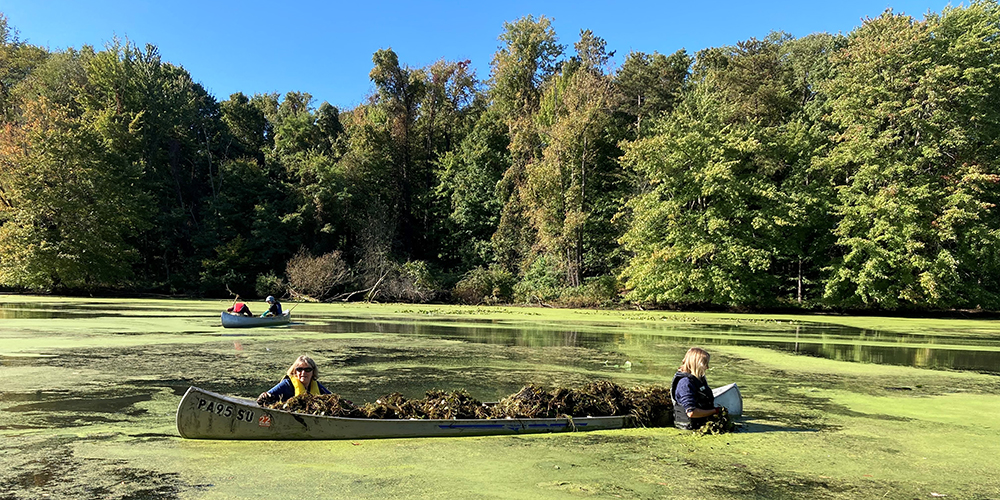
Volunteers at the Pymatuning Reservoir’s European Frog-bit clean-up spent hours carefully wading through the water, pulling out an estimated ton of Frog-bit. This task would have been even more difficult had it not been for the various local agencies and groups coming together for one common goal.
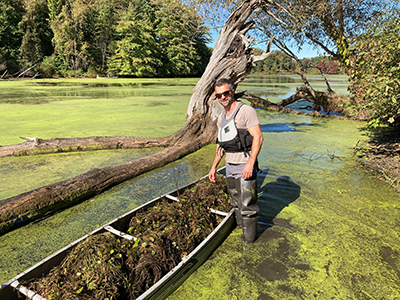
“The great thing that is going on with invasive species management in Pennsylvania is that there is a statewide initiative to collaborate among the agencies,” said DEP Senior Great Lakes Biologist, James Grazio, PhD. “We can mobilize more quickly, and we can work as one state team rather than individual agencies to try and solve the problem.”
Removing European Frog-bit from a body of water by hand, along with herbicide treatments, is an effective way to eradicate the invasive species, but it isn’t the only way.
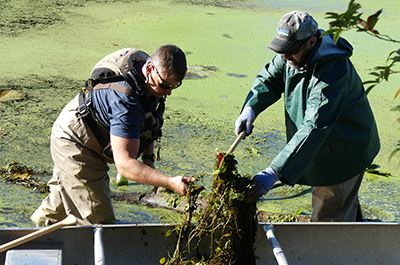
“The best thing that fishermen, outdoorsmen, and other stewards of the environment can do is not spread the species from one body of water to another,” said Grazio. “You have to make sure you clean, drain, and dry your boats, fishing gear, or other equipment before you access another body of water.”